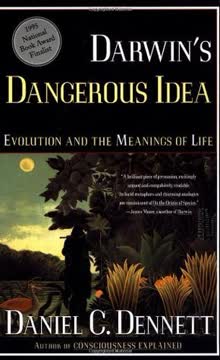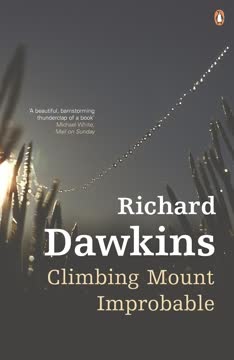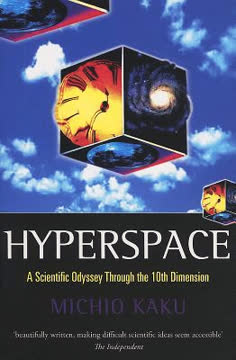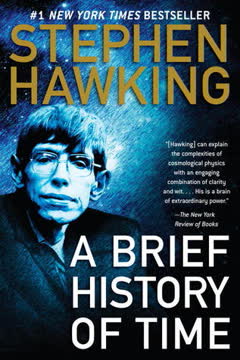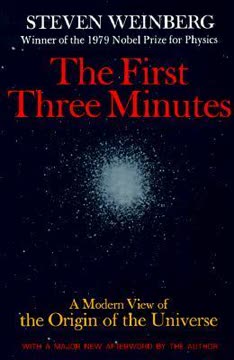نکات کلیدی
1. جهان با حالتی فوقالعاده داغ و متراکم آغاز شد
"در آغاز انفجاری وجود داشت. نه انفجاری مانند آنچه در زمین آشناست، که از یک مرکز مشخص آغاز شده و به تدریج هوای اطراف را در بر میگیرد، بلکه انفجاری که در همه جا بهطور همزمان رخ داد و تمام فضا را از ابتدا پر کرد، بهطوری که هر ذره ماده از هر ذره دیگر دور میشد."
آغاز انفجاری. منشاء جهان مانند انفجارهای معمولی نیست، بلکه گسترش همزمانی است که در همه جا اتفاق میافتد. در آغاز، جهان به طرز غیرقابل تصوری داغ و متراکم بود، با دماهایی که به صدها میلیون درجه میرسید و ذرات با سرعتهای شگفتانگیزی با یکدیگر تعامل میکردند.
تعادل حرارتی. در این لحظات اولیه، جهان در حالتی نزدیک به تعادل حرارتی کامل بود. ذرات بهطور مداوم با یکدیگر برخورد کرده و تعامل میکردند و تعادلی را حفظ میکردند که ویژگیهای بنیادی ماده و انرژی را تعیین میکرد. این تعادل به فیزیکدانان اجازه میداد تا شرایط اولیه جهان را با دقت شگفتانگیزی پیشبینی کنند.
ذرات بنیادی. جهان اولیه حاوی سوپی از ذرات بنیادی بود:
- فوتونها (ذرات نور)
- الکترونها و پوزیترونها
- نوترینوها و آنتینوترینوها
- پروتونها و نوترونها در مقادیر کم
2. کهکشانها از یکدیگر دور میشوند
"جهان بهطور یکنواخت و ایزوتروپیک در حال گسترش است - الگوی مشابهی از جریان توسط ناظران در تمام کهکشانهای معمولی و در تمام جهات مشاهده میشود."
گسترش کیهانی. کهکشانها ثابت نیستند بلکه با سرعتهایی متناسب با فاصلهشان از یکدیگر دور میشوند. این گسترش برای اولین بار از طریق مشاهدات طیفی از تغییرات قرمز کهکشانها کشف شد که نشان میدهد که کهکشانهای دورتر با سرعت بیشتری در حال دور شدن هستند.
قانون هابل. رابطه بین فاصله یک کهکشان و سرعت پسرفت آن بهعنوان قانون هابل شناخته میشود. این اصل بنیادی نشان میدهد که جهان بهطور مداوم در حال گسترش است و کهکشانها با سرعتهای رو به افزایش از یکدیگر دور میشوند.
شواهد مشاهداتی:
- تغییرات خطوط طیفی به سمت طول موجهای قرمز
- سرعتهای متناسب کهکشانهای دور
- الگوی گسترش یکنواخت در سراسر جهان قابل مشاهده
3. تابش میکروویو کیهانی تاریخ اولیه جهان را فاش میکند
"تلاش برای درک جهان یکی از معدود چیزهایی است که زندگی انسانی را کمی بالاتر از سطح کمدی میبرد و به آن برخی از زیباییهای تراژدی را میدهد."
زمینه تابش. تابش میکروویو کیهانی که بهطور تصادفی در سال 1965 کشف شد، شواهد حیاتی درباره وضعیت اولیه جهان ارائه میدهد. این تابش یکنواخت پسمانده حرارت از زمانی است که جهان شفاف شد، تقریباً 700,000 سال پس از آغاز آن.
بینشهای دما. دمای این تابش که تقریباً 3 درجه کلوین است، به دانشمندان اجازه میدهد تا شرایط اولیه جهان را بازسازی کنند. با تحلیل این تابش، پژوهشگران میتوانند نسبت فوتونها به ذرات هستهای را محاسبه کرده و ترکیب بنیادی جهان اولیه را درک کنند.
اهمیت کشف:
- تأیید نظریه بیگ بنگ
- ارائه شواهد تجربی برای تکامل کیهانی
- امکان محاسبات دقیق از شرایط اولیه جهانی
4. سه دقیقه اول ترکیب بنیادی جهان را تعیین کرد
"در پایان سه دقیقه اول، محتوای جهان عمدتاً بهصورت نور، نوترینوها و آنتینوترینوها بود."
فرآیند هستهسازی. در طول سه دقیقه اول، واکنشهای هستهای بنیادی رخ داد که ترکیب عناصر جهان را تعیین کرد. بهطور خاص، این دوره تقریباً 75% هیدروژن و 25% هلیوم تولید کرد که به بلوکهای اصلی ستارهها و کهکشانها تبدیل میشود.
شرایط دما و چگالی بحرانی. دما و چگالی جهان در این دقایق اولیه در تعیین اینکه کدام واکنشهای هستهای میتوانند رخ دهند، حیاتی بود. با خنک شدن و گسترش جهان، پروتونها و نوترونها با هم ترکیب شدند تا هستههای اتمی سبک را تشکیل دهند.
نکات برجسته تشکیل عناصر:
- هیدروژن بهعنوان فراوانترین عنصر باقی ماند
- هلیوم از طریق واکنشهای هستهای سریع تشکیل شد
- مقادیر کمی از دوتریوم و سایر عناصر سبک ایجاد شد
5. فیزیک ذرات شرایط فوقالعاده جهان اولیه را توضیح میدهد
"در دماهای بالای آستانه یک میلیون و پانصد هزار میلیون درجه کلوین، جهان حاوی تعداد زیادی از ذرات معروف به پی مزونها خواهد بود."
تعاملات ذرات. شرایط فوقالعاده جهان اولیه اجازه تعاملات منحصر به فرد ذرات را میداد که در شرایط آزمایشگاهی کنونی قابل بازتولید نیست. ذرات در تعادل حرارتی وجود داشتند و بهطور مداوم یکدیگر را ایجاد و نابود میکردند.
بینشهای مکانیک کوانتومی. نظریه کوانتوم توضیح میدهد که ذرات در دماهای فوقالعاده بالا چگونه رفتار میکنند و تقارنها و تعاملات بنیادی جهان را فاش میکند. این تعاملات ساختار پایه ماده و انرژی را تعیین کرد.
ویژگیهای رفتار ذرات:
- ایجاد و نابودی مداوم
- حفظ تعادل حرارتی
- الگوهای تعامل پیچیده
- تبادلات انرژی سریع
6. آینده جهان به چگالی کنونی آن بستگی دارد
"اگر چگالی کیهانی کمتر از چگالی بحرانی باشد، آنگاه جهان بهطور نامحدود گسترش خواهد یافت."
سناریوهای گسترش. سرنوشت نهایی جهان به چگالی ماده کنونی آن بستگی دارد. اگر چگالی زیر آستانه بحرانی باشد، جهان بهطور نامحدود به گسترش خود ادامه خواهد داد؛ اگر بالاتر باشد، در نهایت منقبض خواهد شد.
آیندههای کیهانی بالقوه. بسته به چگالی، جهان ممکن است گسترش بیپایان، انقباض نهایی یا احتمالاً نوسان بین گسترش و انقباض را تجربه کند. هر سناریو پیامدهای عمیقی برای تکامل کیهانی دارد.
امکانهای نتیجه چگالی:
- جهان نامحدود و در حال گسترش
- جهان محدود با انقباض نهایی
- مدل بالقوه نوسانی گسترش-انقباض
7. کنجکاوی علمی درک انسانی را ارتقا میدهد
"تلاش برای درک جهان یکی از معدود چیزهایی است که زندگی انسانی را کمی بالاتر از سطح کمدی میبرد و به آن برخی از زیباییهای تراژدی را میدهد."
کاوش فکری. تحقیق علمی نمایانگر شریفترین تلاش بشریت برای درک است. با بررسی سیستماتیک منشاء و مکانیکهای جهان، انسانها از وجود روزمره فراتر رفته و با سوالات عمیق وجودی درگیر میشوند.
اهمیت فلسفی. روش علمی به انسانها اجازه میدهد تا از توضیحات اسطورهای فراتر بروند و بینشهای تجربی درباره فرآیندهای کیهانی ارائه دهند. این رویکرد پیروزی تفکر منطقی بر تفسیرهای ماورایی را نمایان میسازد.
انگیزههای تحقیق:
- گسترش دانش بشری
- به چالش کشیدن پارادایمهای موجود
- جستجوی حقایق بنیادی
8. جهان اولیه تقارن و سادگی شگفتانگیزی را نشان میداد
"طبیعت اکنون تنوع زیادی از انواع ذرات و انواع تعاملات را نشان میدهد. با این حال، ما یاد گرفتهایم که زیر این تنوع را ببینیم و سعی کنیم ذرات و تعاملات مختلف را بهعنوان جنبههایی از یک نظریه میدان گسسته ساده متحد ببینیم."
تقارنهای بنیادی. جهان اولیه سادگی و تقارن زیرین را نشان میداد که اکنون با خنک شدن کیهانی پنهان شده است. شرایط دماهای بالا اجازه میداد که نیروهای بنیادی بیشتر متحد و به هم پیوسته به نظر برسند.
تعاملات ذرات. در دماهای فوقالعاده، تعاملات مختلف ذرات کمتر تفکیک شده بودند و این نشان میدهد که توصیف بنیادیتر و متحدتری از نیروهای طبیعی ممکن است وجود داشته باشد.
ویژگیهای تقارن:
- نیروهای بنیادی متحد
- تعاملات ذرات سادهشده
- حداقل پیچیدگی در دماهای بالا
9. تعاملات گرانشی و کوانتومی همچنان مرموز باقی ماندهاند
"ما درباره طبیعت کوانتومی گرانش به اندازه کافی نمیدانیم که حتی بتوانیم بهطور هوشمندانه درباره تاریخ جهان قبل از این زمان حدس بزنیم."
محدودیتهای نظری. فیزیک کنونی نمیتواند بهطور کامل تعاملات گرانشی و کوانتومی را در نخستین لحظات جهان توضیح دهد. این عدم قطعیتهای بنیادی نمایانگر شکافهای قابل توجهی در درک علمی است.
پیچیدگی نیروهای بنیادی. شرایط فوقالعاده آغاز جهان چالشهایی برای چارچوبهای نظری موجود ایجاد میکند و محدودیتهای دانش علمی کنونی را برجسته میسازد.
مرزهای تحقیق:
- نظریههای گرانش کوانتومی
- فیزیک شرایط فوقالعاده
- اتحاد نیروهای بنیادی
10. منشاء جهان چالشهایی برای درک انسانی ایجاد میکند
"تقریباً غیرقابل مقاومت است که انسانها باور کنند که ما رابطه خاصی با جهان داریم، که زندگی انسانی تنها نتیجهای کمدی از زنجیرهای از تصادفات است که به سه دقیقه اول برمیگردد."
چشمانداز وجودی. منشاء جهان بیاهمیتی بشریت را فاش میکند در حالی که بهطور همزمان ظرفیت ما برای درک فرآیندهای کیهانی را جشن میگیرد. توانایی ما برای درک چنین مقیاسهای وسیع نمایانگر هم تواضع و هم دستاوردهای فکری است.
بیتوجهی کیهانی. تکامل جهان بدون هدف یا نیات خاصی رخ میدهد و چالشهایی برای دیدگاههای انسانمحور ایجاد میکند و بر طبیعت تصادفی، اما دقیقاً ریاضیاتی توسعه کیهانی تأکید میکند.
پیامدهای فلسفی:
- به چالش کشیدن دیدگاههای انسانمحور
- جشن گرفتن قابلیتهای فکری انسان
- پذیرش پیچیدگی کیهانی
آخرین بهروزرسانی::
FAQ
What's "The First Three Minutes" about?
- Overview of the Universe's Origin: "The First Three Minutes" by Steven Weinberg provides a detailed account of the universe's origin, focusing on the first few minutes after the Big Bang.
- Scientific Exploration: The book explores the scientific principles and theories that explain the early universe's conditions, including the formation of light elements and cosmic microwave background radiation.
- Integration of Physics and Cosmology: Weinberg integrates concepts from particle physics and cosmology to present a coherent picture of the universe's early moments.
- Historical Context: The book also delves into the historical development of cosmological theories and the scientific discoveries that have shaped our understanding of the universe.
Why should I read "The First Three Minutes"?
- Comprehensive Understanding: It offers a comprehensive understanding of the early universe, making complex scientific concepts accessible to non-specialists.
- Scientific Curiosity: For those interested in cosmology and the origins of the universe, it provides a detailed and scientifically rigorous exploration.
- Historical Insight: The book provides historical insights into the development of cosmological theories and the scientific process.
- Author's Expertise: Written by Nobel laureate Steven Weinberg, it reflects the expertise and insights of a leading physicist in the field.
What are the key takeaways of "The First Three Minutes"?
- Big Bang Theory: The book supports the Big Bang theory as the most widely accepted explanation for the universe's origin.
- Cosmic Microwave Background: It explains the significance of the cosmic microwave background radiation as evidence of the universe's hot, dense beginnings.
- Element Formation: Weinberg details how the light elements were formed during the first few minutes of the universe's existence.
- Scientific Methodology: The book emphasizes the importance of empirical data and theoretical models in understanding cosmological phenomena.
What are the best quotes from "The First Three Minutes" and what do they mean?
- "The more the universe seems comprehensible, the more it also seems pointless." This quote reflects the paradox of scientific discovery, where understanding the universe's mechanics can lead to existential questions about meaning.
- "The effort to understand the universe is one of the very few things that lifts human life a little above the level of farce, and gives it some of the grace of tragedy." Weinberg highlights the nobility and significance of scientific inquiry in human life.
- "It is almost irresistible for humans to believe that we have some special relation to the universe." This quote addresses the human tendency to seek meaning and connection in the cosmos.
How does Steven Weinberg explain the Big Bang in "The First Three Minutes"?
- Initial Conditions: Weinberg describes the universe's initial conditions as extremely hot and dense, leading to rapid expansion.
- Expansion and Cooling: The book explains how the universe expanded and cooled, allowing for the formation of subatomic particles and eventually atoms.
- Cosmic Microwave Background: Weinberg discusses the cosmic microwave background as a remnant of the early universe, providing evidence for the Big Bang.
- Scientific Evidence: The explanation is supported by empirical data and theoretical models, emphasizing the scientific basis for the Big Bang theory.
What is the significance of the cosmic microwave background in "The First Three Minutes"?
- Evidence of the Big Bang: The cosmic microwave background is presented as crucial evidence supporting the Big Bang theory.
- Uniform Radiation: Weinberg explains that this radiation is uniform across the universe, indicating a common origin.
- Temperature Measurement: The book details how the temperature of the cosmic microwave background helps determine the universe's age and expansion rate.
- Historical Discovery: Weinberg provides a historical account of its discovery and its impact on cosmology.
How does "The First Three Minutes" describe the formation of light elements?
- Nucleosynthesis Process: The book explains the process of nucleosynthesis, where light elements like hydrogen and helium formed in the early universe.
- Temperature and Density: Weinberg describes how the universe's temperature and density during the first few minutes allowed for nuclear reactions.
- Elemental Abundance: The predicted abundance of light elements matches observations, supporting the Big Bang model.
- Scientific Calculations: Detailed calculations are provided to show how these elements formed under specific conditions.
What role do neutrinos play in "The First Three Minutes"?
- Early Universe Conditions: Neutrinos were abundant in the early universe and played a role in its thermal history.
- Weak Interactions: Weinberg discusses how neutrinos interact weakly with other particles, making them difficult to detect.
- Cosmic Background: The book suggests that a cosmic neutrino background exists, similar to the cosmic microwave background.
- Theoretical Implications: Neutrinos are used to explore theoretical aspects of particle physics and cosmology.
How does "The First Three Minutes" integrate particle physics with cosmology?
- Elementary Particles: Weinberg discusses the role of elementary particles, such as quarks and leptons, in the early universe.
- Strong and Weak Forces: The book explains how strong and weak nuclear forces influenced the universe's evolution.
- Unified Theories: Weinberg explores the potential for unified theories that connect particle physics with cosmological phenomena.
- Scientific Framework: The integration provides a comprehensive framework for understanding the universe's origin and development.
What historical context does "The First Three Minutes" provide about cosmology?
- Development of Theories: The book traces the historical development of cosmological theories, from early myths to modern science.
- Key Discoveries: Weinberg highlights key discoveries, such as the cosmic microwave background and red shifts, that shaped our understanding.
- Scientific Debates: The book discusses scientific debates and controversies that have influenced cosmological research.
- Influential Figures: Weinberg acknowledges the contributions of influential scientists in the field of cosmology.
How does "The First Three Minutes" address the concept of time in the universe?
- Beginning of Time: Weinberg discusses the possibility of a beginning of time with the Big Bang, where time itself may have started.
- Cosmic Timeline: The book provides a detailed timeline of events in the early universe, measured in seconds and minutes.
- Philosophical Implications: Weinberg explores the philosophical implications of a finite or infinite timeline for the universe.
- Scientific Perspective: The concept of time is addressed from a scientific perspective, emphasizing empirical evidence and theoretical models.
What are the scientific challenges and uncertainties discussed in "The First Three Minutes"?
- Strong Interactions: Weinberg highlights the challenges in understanding strong nuclear interactions at high temperatures.
- Quantum Gravity: The book discusses the uncertainties related to quantum gravity and its role in the early universe.
- Initial Conditions: Weinberg acknowledges the difficulty in determining the universe's initial conditions and their implications.
- Ongoing Research: The book emphasizes the need for ongoing research and exploration to address these scientific challenges.
نقد و بررسی
کتاب سه دقیقهی اول به خاطر توضیحات دقیق و جامع خود دربارهی کیهانشناسی اوایل جهان مورد تحسین قرار گرفته است، هرچند برخی آن را برای خوانندگان عمومی بیش از حد فنی میدانند. منتقدان از نثر شفاف وینبرگ و احترام او به هوش خواننده قدردانی میکنند. بسیاری اشاره میکنند که بخشهایی از این کتاب به دلیل پیشرفتهای علمی پس از انتشار آن در سال 1356 اکنون قدیمی شده است. خوانندگان به زمینه تاریخی کشفیات علمی و بینشهای وینبرگ دربارهی ماهیت جهان ارزش میدهند، هرچند برخی در درک مفاهیم پیچیدهی فیزیک ارائه شده با چالشهایی مواجه میشوند.
Similar Books




